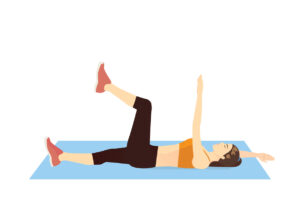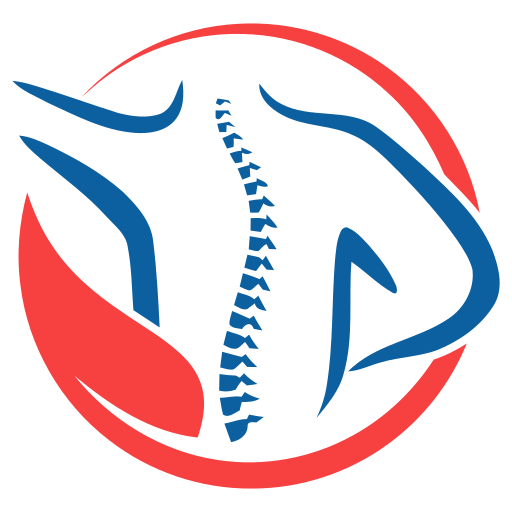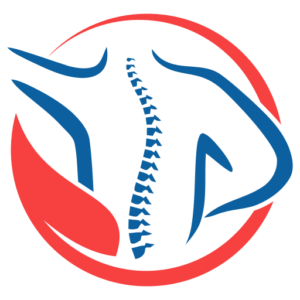Key Points
- Functional movement generally refers to real-life biomechanics. It is a movement using multiple joints in multiple plains. In a rehab setting, it aims to integrate the core, and neuromuscular control.
- It closely replicates real-world situations, and the exercises are designed not just to make a muscle stronger, but to challenge stability and motor control.
- The Prague Rehab School’s Dynamic Neuromuscular Stabilization (DNS) does this from a global (whole of body) approach.
- Gray Cook’s Functional Movement Systems/Selective Functional Movement Assessment (FMS/SFMA) analyses specific ‘regions of interdependence’ of the body.
In a bit more detail
So, what do we mean by ‘functional’ methods, or functional training?
Functional movement is often described as ‘real-life’ biomechanics. This is generally multi-joint, multi-planar movements requiring integration with the ‘core’ and nervous and proprioceptive (motor control and balance) systems. In layman’s terms, it is about learning to stabilize and coordinate different parts of the body while training a movement.
So, why does functional rehabilitation matter?
Functional rehabilitation uses patterns that mimic real-life activity. Instead of just strengthening a particular muscle, or muscle group, it challenges stability &/or motor control. It can also be tailored to promote reflexive stabilisation (of the core, hips, scapula, neck, etc.) while maintaining good joint position (AKA ‘centration’). Often, it’s as much about learning to relax some muscles as it is about learning to ‘fire’ others in the right sequence. Like all good training approaches, incremental progression is the key.
So, what are some functional movement rehab schools?
There are a lot of schools of ‘functional rehab methods’. I will focus on 2 of the biggest players – the Prague Rehab School – DNS; and the Gray Cook School: FMS/SFMA.
The Prague Rehab School – DNS
DNS descended directly from the ‘Granddaddy of rehab’, Professor Vladmir Janda. It was ‘codified’ by his two students, Professors Pavel Kolar and Karel Lewit. It emphasizes spinal stabilization and neuromuscular control through exercises.

DNS is most famous for the dead bug exercise. It’s also known as a ‘tabletop’ in some pilates schools. In my opinion, it is possibly the most poorly performed exercise that you will see at your local gym. Its purpose is to improve the ability to maintain a neutral spine by creating intra-abdominal pressure (IAP). This is achieved via a combination of flattening the diaphragm and drawing the pelvic floor muscles up, while gently co-contracting the lower back and abdominal muscles. Initially, the idea is to learn to ‘breathe behind the sheild’ (i.e. maintain IAP). Progressions involve extending &/or circling limbs while maintaining IAP.
Generally, the challenge for most people is to not let the back arch excessively and/or let the hip flexors take over as the limbs begin to straighten.
Gray Cook: Functional Movement Systems and Selective Functional Movement Analysis
The FMS/SFMA model was influenced by Prof. Janda. However, instead of being ‘global’, it breaks both the assessment and the corrective exercises down into smaller parts and addresses patterns of ‘regional interdependence’. It’s still functional like DNS, just in smaller ‘chunk-size’ pieces.
 Active Straight Leg Lowering Variation – another functional core exercise
Active Straight Leg Lowering Variation – another functional core exercise
While it is possible to do a ‘Dead Bug’ using FMS/SFMA principles, FMS/SFMA would generally opt for an ‘active straight leg lowering’ (ASLL) exercise. The dead bug allows for more degrees of freedom with the knee bend and hip angle. The ASLL instead extends a straight leg in a single plane of motion on the hip (rather than the hip itself moving).
In many ways though, the ASLL is just a progression of the dead bug. Both are seeking to develop ‘proximal stiffness’ through the ‘core’ while integrating breathing, but the ASLL generally requires a lot more core control and strength.
My thoughts
- The SFMA movement screen is a simple but comprehensive assessment tool. It is based on well-established orthopaedic tests and range of motion benchmarks. I use it almost every treatment both as a quick scan to detect issues, and to provide a baseline for comparison. It is also my over-arching assessment framework. Its philosophy of Reset, Reinforce and Reload frames the way I treat people and design rehab programs.
- DNS is a great system and while not as widely used in Australia or America, it is well established in Europe. Most, if not all, functional rehab systems are derived from it in some way.
- I frequently use specific DNS sets of exercise progressions, (e.g. dead bugs), as part of my rehab.
- I also tend to mix and match McGill, McKenzie technique, Original strength as well as strength and conditioning and human movement and exercise science principles as part of my rehab progressions.
- The functional approach forms the basis of most of my rehab. The exception being where an acute injury has purely been due to poor load management (i.e. too much load, volume, intensity, duration, etc.), with the answer being, de-load, then progressively, incrementally re-load, but that’s another blog post!
In my next (and last) blog post on this topic, I’ll go through some of the basic exercises I use to ‘strengthen your core’.

